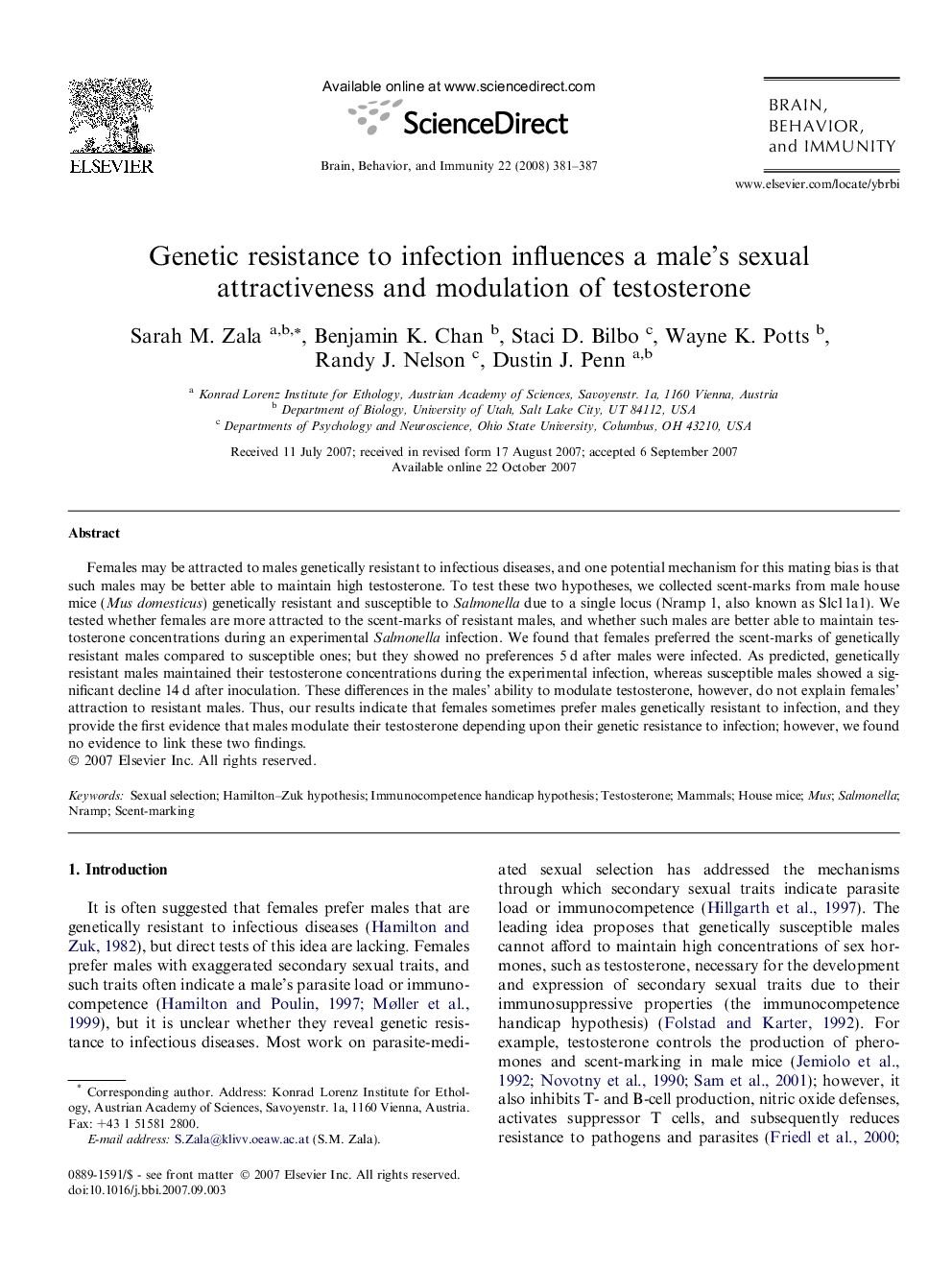| کد مقاله | کد نشریه | سال انتشار | مقاله انگلیسی | نسخه تمام متن |
|---|---|---|---|---|
| 923237 | 921075 | 2008 | 7 صفحه PDF | دانلود رایگان |

Females may be attracted to males genetically resistant to infectious diseases, and one potential mechanism for this mating bias is that such males may be better able to maintain high testosterone. To test these two hypotheses, we collected scent-marks from male house mice (Mus domesticus) genetically resistant and susceptible to Salmonella due to a single locus (Nramp 1, also known as Slc11a1). We tested whether females are more attracted to the scent-marks of resistant males, and whether such males are better able to maintain testosterone concentrations during an experimental Salmonella infection. We found that females preferred the scent-marks of genetically resistant males compared to susceptible ones; but they showed no preferences 5 d after males were infected. As predicted, genetically resistant males maintained their testosterone concentrations during the experimental infection, whereas susceptible males showed a significant decline 14 d after inoculation. These differences in the males’ ability to modulate testosterone, however, do not explain females’ attraction to resistant males. Thus, our results indicate that females sometimes prefer males genetically resistant to infection, and they provide the first evidence that males modulate their testosterone depending upon their genetic resistance to infection; however, we found no evidence to link these two findings.
Journal: Brain, Behavior, and Immunity - Volume 22, Issue 3, March 2008, Pages 381–387